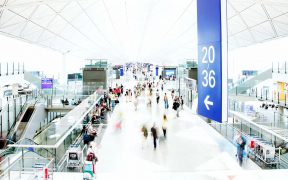Tag: Network Design

High-Density Wireless Networks for Public Venues – White Paper
January 13, 2015
By Vladan Jevremovic, PhD – Research Director at iBwave With the emergence of 4G wireless technology, today’s consumers have come to expect fast and pervasive internet access while on the go, in the same way that they would experience it at home or at the office. Wireless carriers increasingly understand how the user’s experience is affected […]
chat_bubble0 Comment
visibility1998 Views

Thank you and happy Merdeka Day!
September 3, 2014
Don’t you sometimes wish that you could slow down the hands of time? It is already been over a week since our last seminar at Le Meridien in Kuala Lumpur , Hari Merdeka has now come and gone and Stadia & Arena Asia Pacific 2014 (where our Director of Sales Engineering, Jalal Berrahou, is scheduled to participate as a […]
chat_bubble0 Comment
visibility2207 Views

